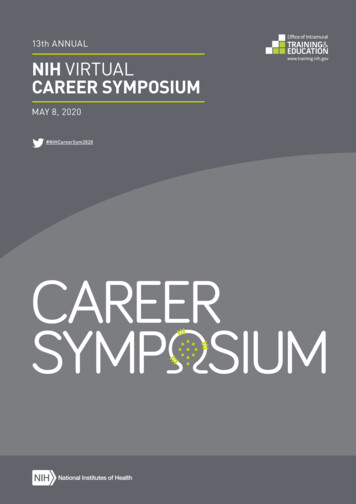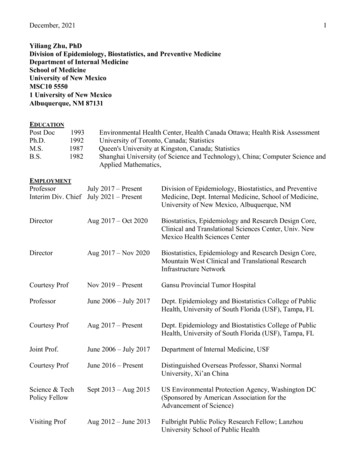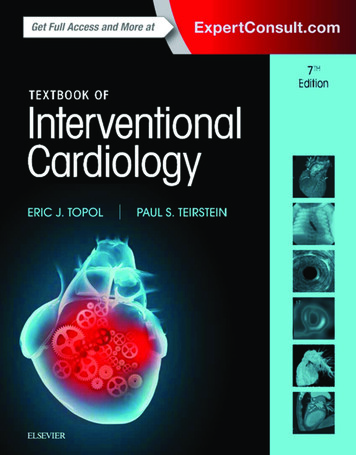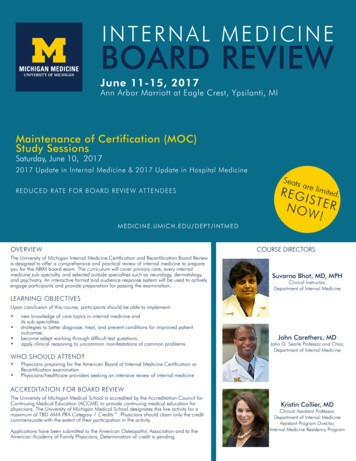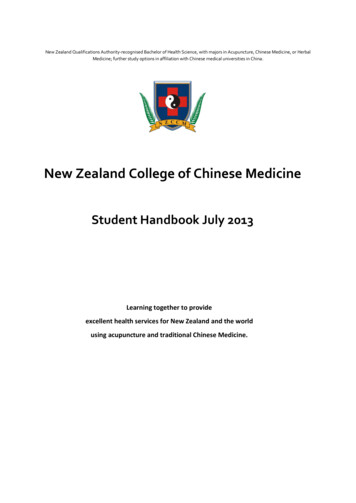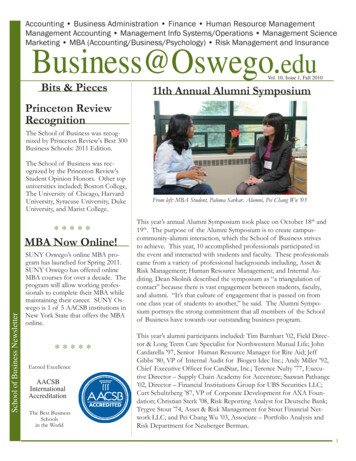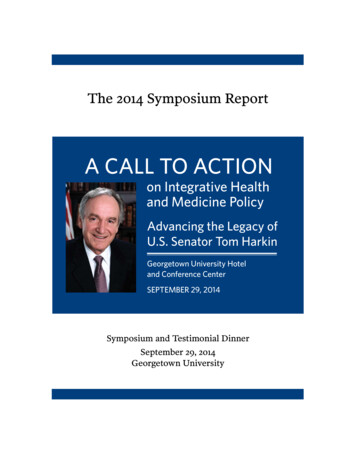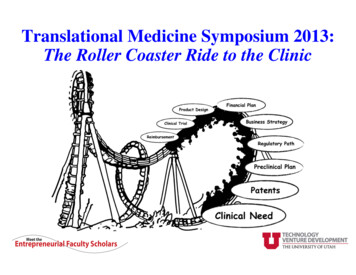
Transcription
Translational Medicine Symposium 2013:The Roller Coaster Ride to the ClinicMeet theEntrepreneurial Faculty Scholars
Translational Medicine Connectsthe Problem to the Solution Every step in developing adevice or drug must beevaluated in light of theclinical problemMeet theEntrepreneurial Faculty Scholars
Translational Medicine Symposium 2013Identifying the Clinical ProblemBench to Business to Bedside:The Roller Coaster Ride to the ClinicFebruary 19, 2013Translational Medicine Workshop:Identifying the Clinical Problem3
Introductions Moderator:– John Langell, MD, PhD, MPH(Executive Director, Center for Medical Innovation) Panelists:– Kathy Peterson, MD(Associate Professor of Gastroenterology, University of Utah)– Robert Hitchcock, PhD(Associate Professor of Bioengineering, University of Utah)February 19, 2013Translational Medicine Workshop:Identifying the Clinical Problem4
IntroductionsHOW DO I IDENTIFY A VALID CLINICALPROBLEM?February 19, 2013Translational Medicine Workshop:Identifying the Clinical Problem5
Clinical Problem Identification Methodology– Observation Watch the entire care pathway Create an observation statement(what you saw not what perceive to be the problem)– Problem Identification and Validation Create a Problem statement from recurring observations Is it really a problem? Stakeholder validation– Need Shaping Identifies a desired change in outcome Stay out of the Solution Space
Conducting Observations Ethnographic Research– “Way of life of living human beings”– Immersion to obtain an in‐depth perspective Become part of the team– Gain acceptance and credibility– Reduce “observer Effect” through repetition– Do not attempt to make treatment recommendations Watch for unexpected clues––––––Times of struggleIdentify “Work‐Arounds”DOGMA: “It’s how I was trained”DOGMA: “Its how I've always done it”Look for variationLook for delays and impediments
Observational Perspectives Observe each component of care– Have a foundational knowledge– Anatomy, physiology, treatment conceptsKnow who the stakeholders are–– 360 degree cycle of careObserve first, then ask basic questionDo not bias your observation or the question!Stakeholders have different perspectivesThe PatientThe FamilyThe PhysicianThe TraineeThe NurseThe FacilityThe Payer
Conducting Observation Critical Clues– Patient Perspective: Pain, Death, Stress– Provider Perspective: Risk, Malfunction, Uncertainty, Dogma– System Perspective: Cost, Inefficiency, Work absence Documentation of Observations– Innovation notebook Format, process, authentication, additions, blank space, deletions– Do not editorialize– Note: questions/answers, times, procedure details, observations
Conducting Observation Study all Possible Scenarios––––Different patient types with different needsDifferent provider stakeholdersDifferent treatment approachesDifferent Treatment Settings
ObservationCase
Conducting Observation Study Team Assignment– How do we increase Patient Compliance?– Foundational knowledge– Ethnographic research Clinical immersion– IdeationResult: Three personas .not one solution1) The Hipster‐ Young, single, socially motivated, appearance‐driven2) The Metro‐ Health conscious, spiritual, personal fulfillment focused3) The Dude‐ non‐hygienic, unconcerned with appearance, conveniencefocused
The Roller Coaster Ride to the Clinic Entrepreneurial Faculty ScholarsMeet the. Translational Medicine Connects the Problem to the Solution
